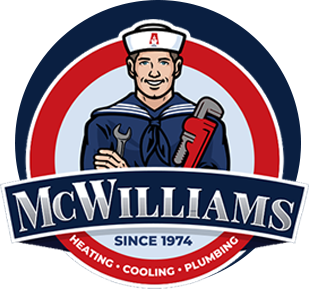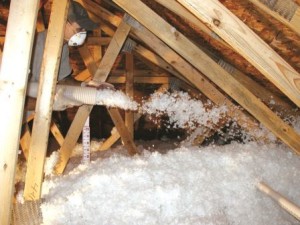Home Improvement Projects for Your Lufkin Home to Promote Energy Efficiency. No matter what type of home you own in the Lufkin area, there’s always room for improvement. This is especially true in light of the savings home improvement projects for energy efficiency offer. Whether it involves sealing your home against air leaks, adding insulation to the attic or refurbishing aging ductwork, you can rest easy knowing that all of these improvements will help you cut down on energy expenses while making your home more comfortable.
As far as home improvement projects for energy efficiency go, there are several you can choose from depending on your home’s energy needs and your budget. The following goes in-depth about some these projects and how they can help your home become even more energy efficient.
Improving the Attic
The attic is probably one of the first places you should look when it comes to home improvement projects for energy efficiency. A poorly-insulated or badly sealed attic can cause a wide variety of problems for the average homeowner, often resulting in heating and cooling bills that are much higher than they should be.
High heating and cooling bills aren’t the only indicator of an attic in need of improvement. There are several other warning signs that your attic could use some work:
- You see ice dams forming during the winter
- Certain rooms remain too hot or too cold
- You’re faced with constant, hard-to-find drafts
The first step involves putting an end to air leaks. Check around recessed lights, wiring and plumbing pass-throughs, attic hatches and dropped soffits, as these areas can leak air like a sieve. You’ll want to handle the major holes first, preferably with fiberglass insulation. Place the insulation in an ordinary garbage bag and tightly pack and fold it into place around and/or over the hole.
As for dropped soffits, you can take care of those with a length of rigid foam board or reflective foil. Just make sure it’s cut a few inches longer than needed so the entire area is properly blocked off. Large gaps around attic pipes can be taken care of with aluminum flashing and a thorough application of high temperature caulk.
The next step is to ensure that the attic has enough insulation to maintain ideal temperatures year-round. For do-it-yourselfers, laying down layer rolls of fiberglass insulation is often the simplest and least expensive option available. Loose fill insulation is also an option, although it requires the use of special machinery for installation. Be sure to stay clear of recessed light fixtures as well as soffit vents, as these can create fire hazards and interfere with attic airflow.
Renovating Crawl Spaces and Basements for Energy Efficiency
Crawl spaces and basements are other areas that deserve attention when it comes to energy efficiency. Unfinished basements are notorious for their lack of insulation and poor sealing against cold weather and the occasional pest. Sealing up and insulating these areas during your home improvement projects for energy efficiency can go a long way toward eliminating drafts and cold flooring on lower levels, in addition to improving your home’s energy efficiency and reducing utility bills over the long run.
When checking for air leaks and basements and crawl spaces, it’s a good idea to take a look at the following areas:
- Underneath the sill plate and around the nearby foundation
- In between rim joists
- Around pass-through areas for wiring and plumbing pipes
- Around basement windows
- Around exterior crawl space doors
Gaps around these areas can allow cold air to leak into your home, making it much more difficult to keep it warm without wasting a lot of energy in the process. For this reason, it’s always a good idea to close off these gaps and add insulation as needed.
The first step involves sealing up the top and bottom areas inside of the rim joist cavity, preferably using caulk for gaps less than 1/4-inch in size and expanding spray foam for larger gaps. You should do the same for areas where electrical wiring or plumbing passes through.
The next step involves cutting and fitting fiberglass batts to the correct size and length for each rim joist. You can also use rigid foam insulation just as long as it’s capable of sealing your basement or crawl space against errant drafts.
It’s also important to pay attention to insulation R-values, as these can affect how well your home is insulated. Lufkin and the rest of the southeast Texas area falls under Zone 2 of the Department of Energy’s insulation zone map, where insulation rated at R-13 to R-19 is recommended for uninsulated basements or crawl spaces.
Improving Ducts
Other home improvement projects for energy efficiency include improvements to your home’s heating and cooling ducts. Duct leaks often play a major role in heating losses and higher utility bills. Aging and poorly constructed ductwork can also cause a noticeable decline in indoor air quality, in addition to energy efficiency and overall home comfort.
Here’s what you should do when it comes to improving ductwork:
- Make searching for air leaks your first priority. Visually inspect the ducts for any cracks or gaps, as well as any kinks, damaged insulation or other forms of damage. For metal ducts, you should always keep your eyes peeled for signs of rust and/or corrosion.
- Inspect the ducts for signs of heavy dust buildup. Leaky ducts not only let conditioned air out, but they also attract large amounts of dust and debris. It’s a good idea to give ducts a thorough cleaning on a regular basis to reduce future dust problems and improve your heating and cooling system’s overall efficiency.
- When sealing ducts, use mastic or aluminum tape. Both are designed to withstand the constant temperature changes faced by the ducts. Don’t use duct tape, as the adhesive can come apart after a short amount of time.
- Identify areas that can be improved with the addition of insulation around or near the ducts. Most heat losses occur when conditioned air passes through uninsulated spaces within your home.
- If you find yourself making major changes to your home’s ductwork, have your contractor perform a Manual J load calculation and a Manual D duct design. This helps the pros design your new ductwork to be more energy efficient than the previous ductwork.
Sealing Doors and Windows
Last but not least on the list of home improvement projects for energy efficiency is weatherstripping and sealing around doors and windows. Energy-wasting leaks around these areas can cost you big time when it comes to utility costs and home comfort.
Here are a few tips to help you find and take care of these leaks:
- Position a smoke pen near windows, doors, electrical outlets and other places where you suspect air leakage. A horizontal smoke trail indicates a leak issue.
- Address door and window leaks by installing new weatherstripping around both. For example, a vinyl bulb door threshold can easily stop major drafts that travel underneath the bottom of the door.
- Carefully seal drafts found around electrical outlets, wiring and plumbing pass-throughs and other areas with caulk or foam sealant.
It’s not just doors and windows that allow drafts to come through unimpeded. Fireplaces are also notorious for allowing air and water to leak through, especially around the flue. The metal flue constantly expands and contracts as it’s repeatedly heated and cooled throughout its life. Over time, this causes the metal to warp or even fracture, creating a new channel for air to rush through.
There are two ways you can deal with these air leaks as you finish up your home improvement projects for energy efficiency:
- The short-term solution involves sealing off the flue when the fireplace isn’t in use. An inflatable chimney balloon provides reasonable effectiveness, plus it automatically deflates if it’s left in place when a fire’s started.
- The long-term solution involves replacing and adequately sealing around the base of the flue. This is normally done with sheet metal or aluminum flashing applied at the base, along with an application of silicone caulk to close off any gaps left behind during the installation. Of course, you could also permanently seal your chimney, but you’ll lose its use.
To learn more about these and other home improvement projects for energy efficiency, contact the professionals at McWilliams & Son Heating & Air. Since 1974, we’ve proudly helped Lufkin and Nacogdoches homeowners take care of their heating and cooling needs. Remember this article when thinking about Home Improvement Projects for Your Lufkin Home to Promote Energy Efficiency.


